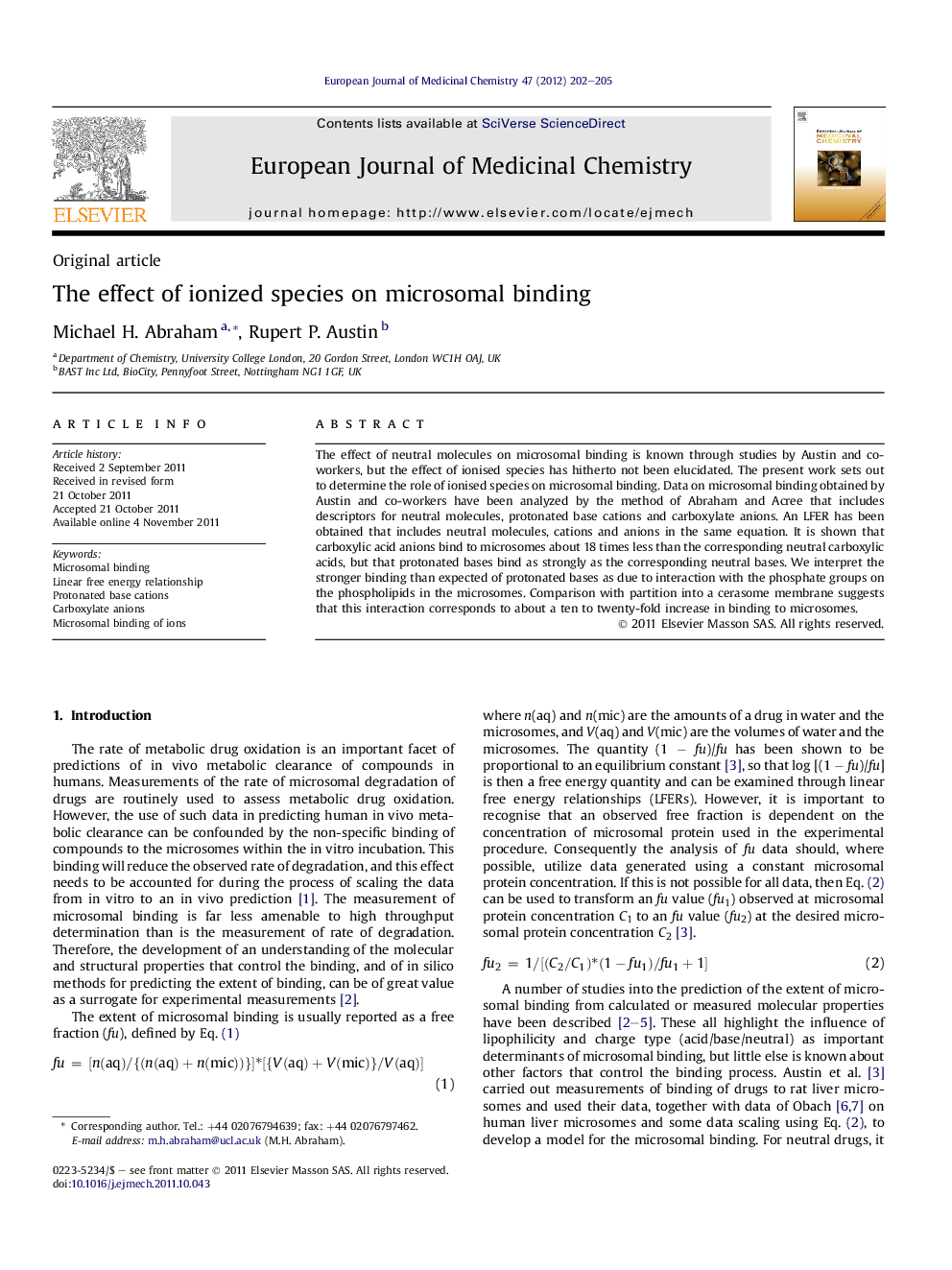| Article ID | Journal | Published Year | Pages | File Type |
|---|---|---|---|---|
| 1395953 | European Journal of Medicinal Chemistry | 2012 | 4 Pages |
The effect of neutral molecules on microsomal binding is known through studies by Austin and co-workers, but the effect of ionised species has hitherto not been elucidated. The present work sets out to determine the role of ionised species on microsomal binding. Data on microsomal binding obtained by Austin and co-workers have been analyzed by the method of Abraham and Acree that includes descriptors for neutral molecules, protonated base cations and carboxylate anions. An LFER has been obtained that includes neutral molecules, cations and anions in the same equation. It is shown that carboxylic acid anions bind to microsomes about 18 times less than the corresponding neutral carboxylic acids, but that protonated bases bind as strongly as the corresponding neutral bases. We interpret the stronger binding than expected of protonated bases as due to interaction with the phosphate groups on the phospholipids in the microsomes. Comparison with partition into a cerasome membrane suggests that this interaction corresponds to about a ten to twenty-fold increase in binding to microsomes.
Graphical abstractFigure optionsDownload full-size imageDownload as PowerPoint slideHighlights► Analysis of the binding of drug molecules to microsomes. ► Carboxylate anions bind 18 times less than the neutral acids. ► Protonated base cations bind as strongly as the neutral base. ► Cations interact with the microsome phosphate anions.
